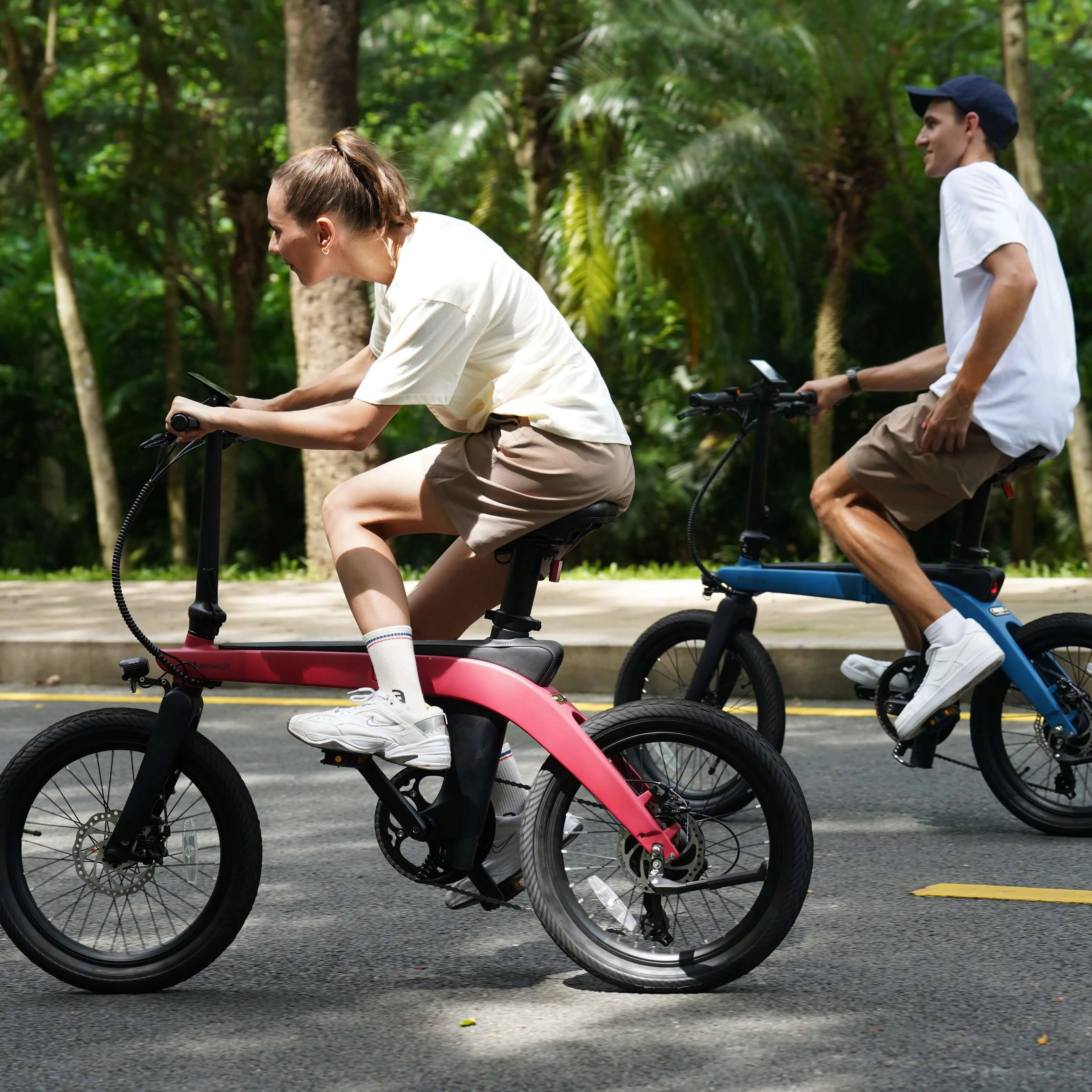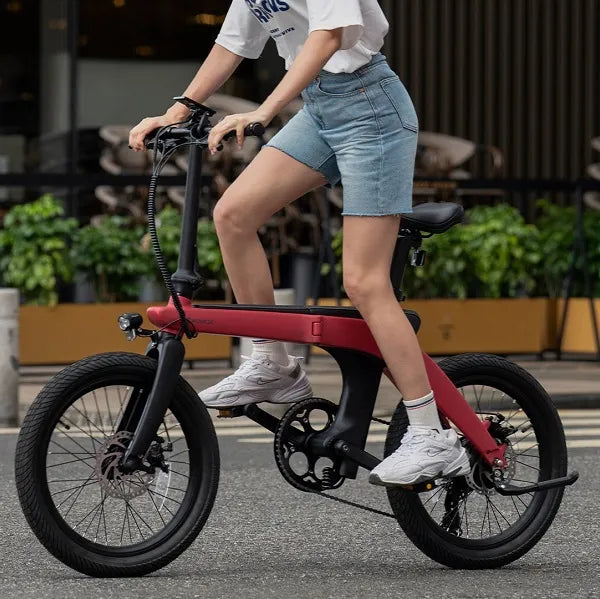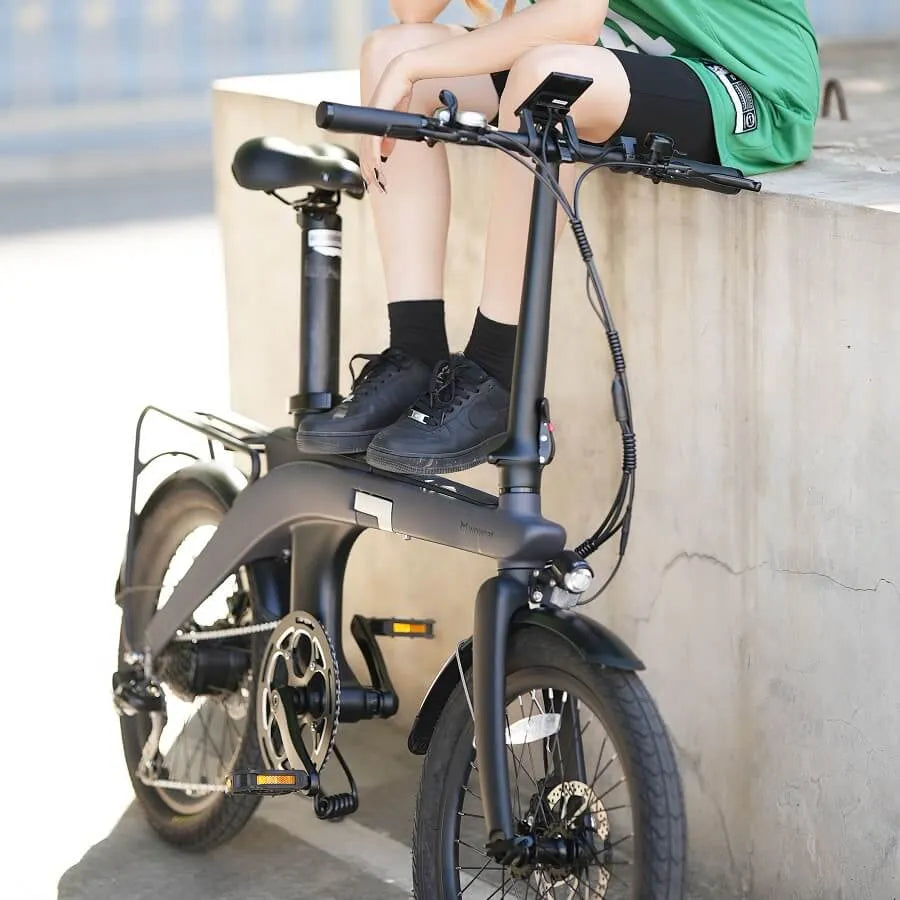Embarking on the journey of selecting the perfect electric bike (e-bike) can be an exciting yet nuanced endeavor. With the growing popularity of e-bikes, navigating through the myriad of options requires careful consideration of various features and functionalities. From motor power to battery life and design aesthetics, let's explore the key factors that will help you make an informed decision on the ideal e-bike companion for your adventures.

Know More about E-Bike Classifications
The classification of electric bikes into Class 1, Class 2, and Class 3 is often used in the United States to define the capabilities and restrictions of these vehicles. Currently, 36 states across the U.S. utilize the three-class system for electric bikes. The three classes under the U.S. state e-bike law are broadly similar across the country and were created to enable local residents to use e-bikes in a more regulated manner. These classifications help to regulate their use on different types of trails and paths. Here are the general characteristics of each class:
Class 1 E-Bike:
Motor Assistance: Provides assistance only when the rider is pedaling.
Maximum Speed: The motor assistance stops when the bike reaches 20 miles per hour (32 km/h).
Throttle: Does not have a throttle for independent motor-only propulsion.
Some bikes have a throttle on the handlebars that offers an extra power boost, but on Class 1 e-bikes the throttle works only if you're also pedaling. But the throttle is able to assist you and make stepping on it effortless.
Class 1 e-bikes are allowed on bike paths and bike lanes that are shared with traditional, non-assisted bikes—what we've started to call analog bikes.
Class 2 E-Bike:
Motor Assistance: Can be propelled solely by the motor without pedaling.
Maximum Speed: The motor assistance stops when the bike reaches 20 miles per hour (32 km/h).
Throttle: Typically equipped with a throttle for independent motor-only propulsion.
Class 2 e-bikes have a top speed of 20 mph, but their motors work even when you're not pedalling. Most Class 2 e-bikes offer both a throttle and an electric assist pedal. As with Class 1 e-bikes, you can generally ride them in the same places as an analog bike.
Class 3 E-Bike:
Motor Assistance: Provides assistance only when the rider is pedaling.
Maximum Speed: The motor assistance stops when the bike reaches 28 miles per hour (45 km/h).
Throttle: Does not have a throttle for independent motor-only propulsion.
Class 3 e-bikes must have a speedometer, but they may or may not have a throttle. This is determined by local laws and regulations. Most states let you take a Class 3 e-bike into road lanes or a bike-only lane on the shoulder of the road (so-called curb-to-curb).
Types of Electric Bikes
Electric bikes, or e-bikes, come in various types, each designed to cater to specific riding styles and preferences. Here are some common types of electric bikes:
City E-Bikes: Ideal for urban commuting, city e-bikes are designed with comfort and practicality in mind. They often feature a step-through frame, integrated lights, fenders, and a rear rack for carrying cargo.
Pros: Comfortable for urban commuting, often equipped with practical features like lights, fenders, and racks.
Cons: May not be suitable for off-road or challenging terrains.
Mountain E-Bikes (e-MTB): Built for off-road adventures, mountain e-bikes are equipped with robust frames, high-traction tires, and advanced suspension systems. The electric assist helps riders tackle challenging terrains with ease.
Pros: Designed for off-road adventures, with robust frames and advanced suspension for tackling tough terrains.
Cons: Can be heavier and less efficient on paved roads.
Folding E-Bikes: Perfect for commuters with limited storage space, folding e-bikes can be compactly folded for easy transport and storage. They are versatile and can be taken on public transportation.
Pros: Compact and portable, ideal for commuters with limited storage space.
Cons: May sacrifice some performance compared to full-sized bikes.
Cargo E-Bikes: Designed for hauling cargo, these e-bikes often have an extended frame, sturdy cargo racks or baskets, and a powerful motor. They are suitable for transporting goods, groceries, or even children.
Pros: Capable of carrying heavy loads, suitable for transporting cargo, groceries, or children.
Cons: Can be bulkier and heavier than other types.
Hybrid E-Bikes: Combining features of road and mountain bikes, hybrid e-bikes offer versatility for various terrains. They typically have a comfortable geometry for longer rides and can handle both paved and unpaved surfaces.
Pros: Versatile for both paved and unpaved surfaces, with a comfortable geometry for longer rides.
Cons: May not excel in extreme terrains.
Cruiser E-Bikes: Known for their laid-back style, cruiser e-bikes are perfect for relaxed rides along the beach or through the neighborhood. They often feature a comfortable, upright riding position.
Pros: Stylish and comfortable for leisurely rides, with an upright riding position.
Cons: Not designed for speed or off-road use.
Road E-Bikes: Designed for speed and efficiency on paved roads, road e-bikes have a lightweight frame, narrow tires, and a geometry optimized for aerodynamics. They are ideal for longer commutes and fitness rides.
Pros: Lightweight and efficient for paved roads, suitable for longer commutes and fitness rides.
Cons: Less comfortable on rough terrains.
Fat-Tire E-Bikes: Equipped with oversized, all-terrain tires, fat-tire e-bikes are designed for riding on sand, snow, or rough trails. The wider tires provide stability and enhanced traction.
Pros: All-terrain capability with enhanced stability and traction on sand, snow, or rough trails.
Cons: Heavier and may have higher rolling resistance on paved surfaces.
Recumbent E-Bikes: These e-bikes feature a reclined seating position, providing a comfortable and aerodynamic alternative to traditional upright bikes. They are suitable for riders seeking a different riding experience.
Pros: Comfortable with a reclined seating position, offering a unique riding experience.
Cons: Less common, potentially harder to find and more expensive.
Choosing the right type of e-bike depends on your intended use, preferences, and the kind of terrain you plan to ride on. Whether you prioritize commuting, off-road adventures, or leisurely rides, there's likely an electric bike tailored to your needs.
How to Buy an E-Bike
Buying an e-bike involves several considerations to ensure that you find the right model for your needs and preferences. Here's a step-by-step guide on how to buy an e-bike:
Define Your Purpose:
Determine the primary purpose of your e-bike. Are you using it for commuting, off-road adventures, leisurely rides, or a combination of these?
Consider Your Budget:
Set a budget for your e-bike purchase. E-bikes come in a wide price range, so knowing your budget helps narrow down your options.
Understand Local Regulations:
Be aware of e-bike regulations in your area, including speed limits, power restrictions, and where e-bikes are allowed to be ridden.
Choose the Right Type:
Select the type of e-bike that suits your needs (e.g., city, mountain, folding, cargo, hybrid). Each type has specific features tailored to different riding styles.
Evaluate Motor and Battery Performance:
Consider the power of the motor (measured in watts) and the capacity of the battery (measured in watt-hours). A higher wattage motor and larger battery capacity generally provide more assistance and longer range.
Test Ride Several Models:
Visit local bike shops to test ride different e-bike models. Pay attention to comfort, handling, and ease of use. This hands-on experience can help you make an informed decision.
Check Components and Build Quality:
Examine the overall build quality, frame material, and components (e.g., brakes, gears, suspension). Quality components contribute to the durability and performance of the e-bike.
Consider Maintenance and Service:
Inquire about maintenance requirements and the availability of service and support. Check if the manufacturer or bike shop offers warranties and after-sales service.
Read Reviews and Seek Recommendations:
Research e-bike reviews online and seek recommendations from other e-bike owners. Real-world experiences can provide valuable insights into the performance and reliability of specific models.
Compare Prices and Features:
Compare prices and features of different e-bikes within your budget range. Look for a balance between cost and the features that matter most to you.
Check Local Dealers and Brands:
Explore e-bikes from reputable brands available at local dealers. This can facilitate easier access to test rides, support, and service.
Ask About Financing Options:
Inquire about financing options if needed. Some bike shops or manufacturers may offer financing plans to make the purchase more affordable.
Finalize Your Purchase:
Once you've made your decision, finalize the purchase and ensure that the e-bike is properly assembled and tuned before taking it home.
Consider the Extras
When buying an e-bike, considering additional accessories and extras can enhance your overall riding experience and address specific needs. Here are some extras to consider:
Helmet:
A high-quality helmet is essential for safety. Look for a comfortable and well-ventilated helmet that meets safety standards.
Lock:
Invest in a sturdy lock to secure your e-bike when parked. U-locks or chain locks are popular choices for deterring theft.
Lights:
Ensure visibility, especially if you plan to ride at night. Front and rear lights are crucial for safety and may be required by local regulations.
Fenders:
Fenders help protect you from mud and water splashes, especially during wet weather. They also keep your e-bike cleaner.
Rear Rack or Panniers:
If you'll be carrying cargo, consider a rear rack or panniers. These accessories provide convenient storage for groceries, work items, or other belongings.
Bike Lock:
For added security, consider using a secondary lock to secure removable parts of your e-bike, such as the battery.
Bike Cover:
A bike cover protects your e-bike from the elements when parked outside. It helps prevent rust and keeps your bike in good condition.
Phone Mount:
A phone mount allows you to easily navigate using GPS while riding. Ensure it's compatible with your phone size and securely attaches to the handlebars.
Tool Kit:
Carry a basic tool kit for on-the-go repairs. This may include a multi-tool, tire levers, spare tubes, and a pump.
Comfort Accessories:
Consider accessories for added comfort, such as ergonomic grips, a comfortable saddle, or a suspension seat post.
Mirrors:
Mirrors can improve awareness of your surroundings, especially in traffic. Handlebar-mounted or helmet-mounted mirrors are common options.
Bike Computer:
Track your speed, distance, and other metrics with a bike computer. Some e-bikes come with integrated displays that provide similar information.
Cycling Clothing:
Invest in appropriate cycling clothing, including moisture-wicking jerseys, padded shorts, and gloves for comfort during longer rides.
Kickstand:
A kickstand is handy for parking your e-bike without having to lean it against a wall or other support.
Electric Bike Insurance:
Explore insurance options for your e-bike. Some companies offer specific coverage for theft, damage, or accidents.
Considering these extras ensures that you have the necessary accessories for a safe, comfortable, and enjoyable e-bike experience. Tailor your choices based on your specific riding habits and preferences.











